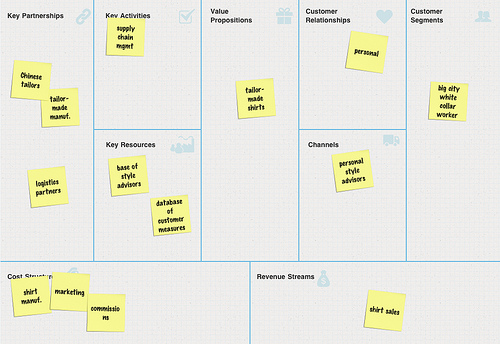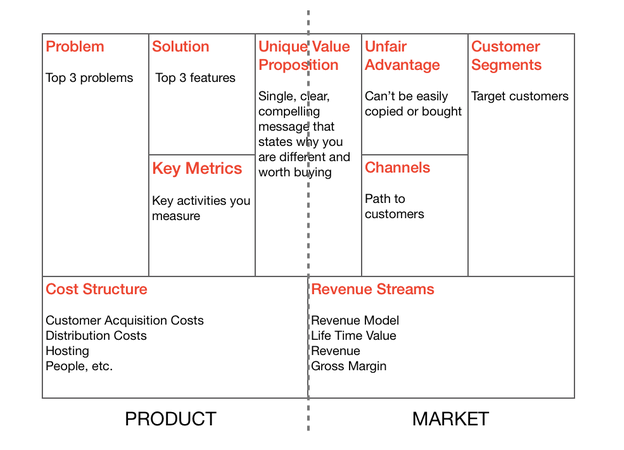The title of this post may sound harsh. But sometimes the truth hurts. And when it comes to your startup strategy, that’s a good thing.
You need a good business model more than you need a good product or service. Fact. Yes, you have of course heard of Alexander Osterwalder’s famous Business Model Canvas. It is a great way for both new and existing businesses to focus on operational as well as strategic management and marketing plans.

But, it is not appropriate for all fledgling businesses. Especially startups. In our view you need to make things even simpler.
Startup strategy: keep it lean
And that’s where the Lean Canvas comes in. Famously put forward by Ash Maurya, it outlines a much more problem-focused approach, among other things. So, what do you choose? Well, if you are at startup stage you should only have one kind of “business plan” for your startup strategy. And that’s Lean Canvas.
It’s no secret that all of our startups which take part in our Venture Building program here at Starttech use Lean Canvas at the centre of their work. I mean, come on, Maurya’s Running Lean is the first book on our official reading list and an integral part of our lean startup curriculum.
Why Lean Canvas vs Business Model Canvas?
So, let’s cut to the chase. This is an easy question to answer. Easier in fact, than most people may think. It’s because of its specific simplicity. What do I mean by that? Put simply, it is designed purely for startups and focused purely for entrepreneurs.
Quick recap. What is Business Model Canvas? It looks something – well exactly actually – like this:
A business plan containing nine features that you must include all together on a one-page document:
- Key Partnerships
- Key Activities
- Key Resources
- Value Propositions
- Customer Relationships
- Channels
- Customer Segments
- Cost Structure
- Revenue Streams
If you are more of a visual person than a list kind of guy like me, this is how it is supposed to look like on the page. Here’s a helpful video of it too.

Lean canvas and the differences
What does Lean Canvas do that’s different?
Good question. Well, apart from the fact that it drills down deeper, it is also simpler.
And herein lies the main issue for a startup strategy that tries to implement the business model canvas. Just look at that list.
Customer Relationships
As a startup, you may have little or no knowledge about, and/or relationship with your customers. In the early startup stage you are still defining who “all” of your customers may be, never mind have a relationship with them. In Lean Canvas this is replaced by Unfair Advantage, a unique feature which makes your product/service stand out from your competitors.
Value Proposition
for a startup this is a very generic term. That’s why in the Lean Canvas there’s a change. It becomes Unique Value Proposition. This is to emphasize the importance of a simple and outstanding message that a startup must get across. Why? To show the customer – and potential customers – that it’s all about efficiency. i.e. how their exceptional way of solving his/her problem is the difference.
Key Partnerships, Activities, and Resources. No, we don’t need these – yet. What we need, and what Lean Canvas suggests, is Problem, Solution, and Key Metrics. The rationale here is simple. For a successful startup strategy, they are there instead because they represent the difference between a growing business and a startup. Your strategy needs to have a complete focus on solving specific problems better than your competition. It’s that simple.
And for the visual gurus among us, here is a snapshot of what Lean Canvas looks like (source: Running Lean):

Conclusion
In our humble opinion, if your startup strategy – depending always on the market you are aiming at of course – follows the Lean Canvas model, you are much more likely to succeed. The reason we say this is because it starts at the problem, and the very fact that it is more oriented at solving a very specific problem. Not only that, but Lean Canvas is about discovering and confirming that you provide that solution in your own, outstanding way.
This obviously helps you build messaging to communicate your unique value proposition. In contrast, Business Model Canvas starts from the customer side (right side). While this makes a lot of sense, it does so more from the perspective of a growth stage, where your customer base begins to blossom. Here you need to focus more on retaining customers than generating sales leads.
Off you go then, keep it lean!
